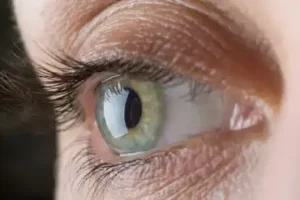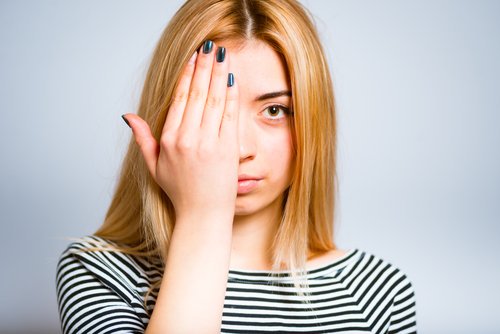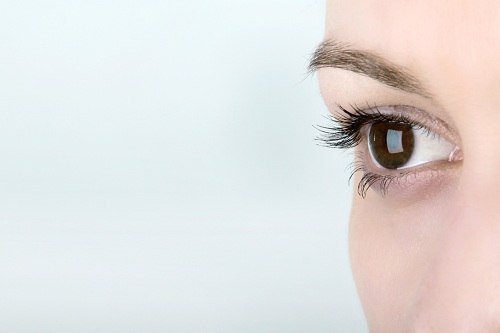7 Tips for Improving Your Vision Naturally Without Surgery

Improving your vision naturally is possible! You just have to know the best tips and exercises to train your eyes and avoid day-to-day eye strain.
In this article, take a look at the best tips for getting your vision back without surgery.
Improving your vision is possible
The majority of optometrists say that it isn’t possible to improve your vision. However, others are taking steps to achieve this. This is especially true of children and people with early stages of eye problems.
It has been shown that putting glasses on a person who has only a slight difference from normal vision is actually more a sentence than a solution.
Thus, this is the best moment to start a natural treatment. After all, their vision is already in good condition.
As more time passes and you get more used to glasses, it’ll be more difficult. However, it’s not impossible.
Discover more: 6 Natural Remedies for Eye Inflammation
Tips to achieve it
1. Be conscious of your eyes

Even though you have the ability to look and see, we often aren’t really conscious of how we use our eyes.
People store emotions and day-to-day strain in their eyes. This causes vision problems. However, the good thing is that what we once thought was incurable could, in reality, have a solution.
Little by little, you should pay more attention to what you do with your eyes. Pay attention to when you squint, why don’t you look in certain directions, why you look down, etc.
2. Take a break from glasses and lenses
Many people are forced to use glasses on a daily basis.
Unfortunately, this can lead to dependency. Your eyes get used to glasses because they don’t have to make any effort.
Because of this, people usually lose their vision instead of regaining it.
We suggest not using glasses for a few hours each day. Do this whenever possible to get your eyes used to work on getting better.
You can progressively increase this time.
3. Look close, look far

Whenever you have the opportunity, you should exercise these visual functions. Whenever you can, go to places where you have larger spaces without obstructions.
In your day-to-day life, add this simple exercise anytime you can: look far away, then close in an alternating pattern. Focus on the details and objects that surround you.
4. Fight eye strain
In many cases, people lose their vision because of an excess of eye strain.
This can be due to spending too many hours in front of the computer or TV. This even happens when you aren’t paying attention because you’re so focused.
In addition, this strain can cause frequent headaches. Improving your vision is also about relaxing and avoiding over-straining your eyes.
To relax your eyes, you can use the palming technique:
- Rub both hands together until they’re warm.
- Put your elbows on a table and put your eyes in the palms of your hands, but don’t press them.
- Relax for a few minutes in this position. At the same time, try to notice any strain you are causing your eyes or the surrounding muscles.
- By finishing this exercise, you’ll feel great relief. You’ll also see a greater sharpness in your vision.
5. Look in all directions

In order to learn to look both near and far, you should also use other techniques that help your eyes. If you don’t, they’ll atrophy.
To do this, try moving your eyes instead of your head whenever you want to look at something. You should also look in all directions: up, down, both sides, diagonal, and even at your nose.
This way, you can keep your eye muscles in shape.
Read more: 7 Easy Eye Exercises For Visual Fatigue and to Avoid Headaches
6. Diet
In every natural treatment, your diet is always present. This is what gives you the nutrients you need to carry out your body’s functions.
Your diet shouldn’t lack:
- Fruits and vegetables: figs, peaches, blueberries, and citrus fruits rich in vitamin C, such as oranges, strawberries, tangerines, kiwis, and lemons. Carrots, onions, tomatoes, broccoli, spinach, and chard are also beneficial for visual health.
- Healthy fats like olive oil and avocado are great allies of your eyes.
- Good quality proteins: beef or lamb liver, eggs for their contribution of complex vitamins B, A, and E, as well as fish, a source of omega, form an excellent option to take care of your eyes, especially sardines, salmon or mackerel.
- Whole grains and legumes such as beans.
- Nuts and seeds: walnuts, almonds, peanuts, pistachios, chia, and sunflower seeds.
6. Consume beverages that contain flavonoids
In addition to the foods mentioned above, the consumption of beverages that provide us with flavonoids results in benefits for the eyes. These are chemicals (phytonutrients) found in vegetables, fruits, and plants.
According this study, its antioxidant effects help prevent diabetic cataracts and protect against diseases that affect the retina and, in general, the ocular system. They can be consumed in beverages such as green or black tea, coffee, cocoa, red wine, and beer.
All cited sources were thoroughly reviewed by our team to ensure their quality, reliability, currency, and validity. The bibliography of this article was considered reliable and of academic or scientific accuracy.
- Academia Estadounidense de Medicina del sueño. (2 de junio de 2020). How lack of sleep affects your eyesight. Consultado el 16 de noviembre de 2023. https://sleepeducation.org/lack-sleep-affects-eyesight/
- Asociación Americana del Corazón (2021). Cómo equilibrar sus entrenamientos para crear el plan de acondicionamiento físico más ideal. https://www.heart.org/en/news/2021/04/28/como-equilibrar-sus-entrenamientos-para-crear-el-plan-de-acondicionamiento-fisico-mas-ideal
- Backes, C., Religi, A., Moccozet, L., Behar, F., Vuilleumier, L., Bulliard, J., Vernez, D. (2018). Sun exposure to the eyes: predicted UV protection effectiveness of various sunglasses. Journal of Exposure Science and Environmental Epidemiology, 29(6), 753-764. https://www.ncbi.nlm.nih.gov/pmc/articles/PMC6803516/
- Boyd, K. (8 de agosto de 2023). Computers, Digital Devices and Eye Strain. Academia Americana de Oftalmología. Consultado el 16 de noviembre de 2023. https://www.aao.org/eye-health/tips-prevention/computer-usage
- Dieu, J., Azmi, M., Binti, M. (2021). Effects of regular exercise on intraocular pressure. European Journal of Ophthalmology, 32(4). https://journals.sagepub.com/doi/abs/10.1177/11206721211051236
- Fan, N., Wang, P., Tang, L., & Liu, X. (2015). Ocular Blood Flow and Normal Tension Glaucoma. BioMed Research International. https://doi.org/10.1155/2015/308505
- Harvard Health Publishing. (24 de junio de 2015). Use sunglasses for vision protection starting at an early age. Consultado el 16 de noviembre de 2023. https://www.health.harvard.edu/blog/use-sunglasses-for-vision-protection-starting-at-an-early-age-201506248107
- Makin, R., et al. (2020). Voluntary Exercise Suppresses Choroidal Neovascularization in Mice. Investigative ophthalmology and visual science, 61(52). https://iovs.arvojournals.org/article.aspx?articleid=2766252#247014664
- National Eye Institute NHI (2023) Healthy Vision Tips. https://www.nei.nih.gov/learn-about-eye-health/nei-for-kids/healthy-vision-tips
- New York State Department of Health (2009). Smoking Can Lead to Vision Loss or Blindness. https://www.health.ny.gov/prevention/tobacco_control/smoking_can_lead_to_vision_loss_or_blindness.htm
This text is provided for informational purposes only and does not replace consultation with a professional. If in doubt, consult your specialist.








